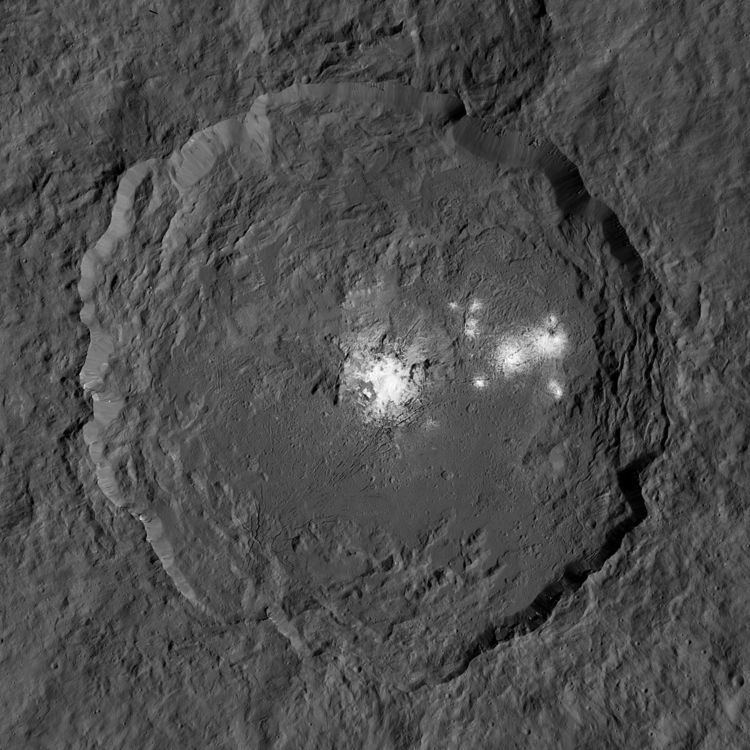Depth 4 km | Diameter 92 kilometres (57 mi) | |
 | ||
Naming After Occator, a helper God of Ceres | ||
Occator /ɒˈkeɪtər/ is an impact crater located on Ceres that contains "Spot 5", the brightest of the bright spots observed by the Dawn spacecraft. It was known as "Region A" in ground-based images taken by the W. M. Keck Observatory on Mauna Kea.
The crater was named after Occator, the Roman god of the harrow and a helper to Ceres.
On 9 December 2015, scientists reported that the bright spots on Ceres, including those in Occator crater, may be related to a type of salt, particularly a form of brine containing magnesium sulfate hexahydrite (MgSO4·6H2O); the spots were also found to be associated with ammonia-rich clays. More recently, on 29 June 2016, scientists reported the bright spot to be mostly sodium carbonate (Na
2CO
3), implying that hydrothermal activity was probably involved in creating the bright spots.
The spot in the center of the crater is named Cerealia Facula, and the group of spots to the east - Vinalia Faculae.
Naming
The name Occator was officially approved by the IAU on 3 July 2013.
